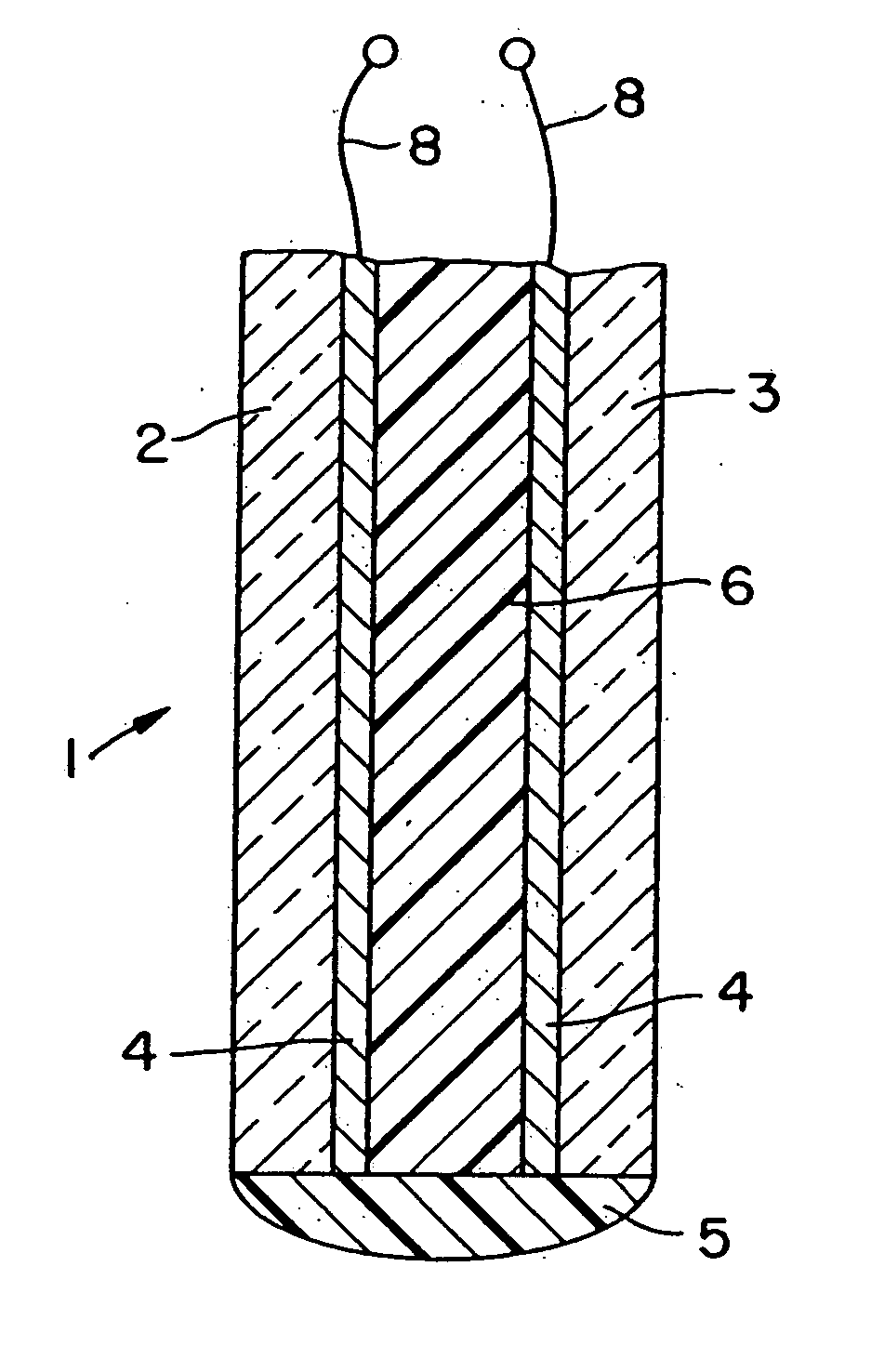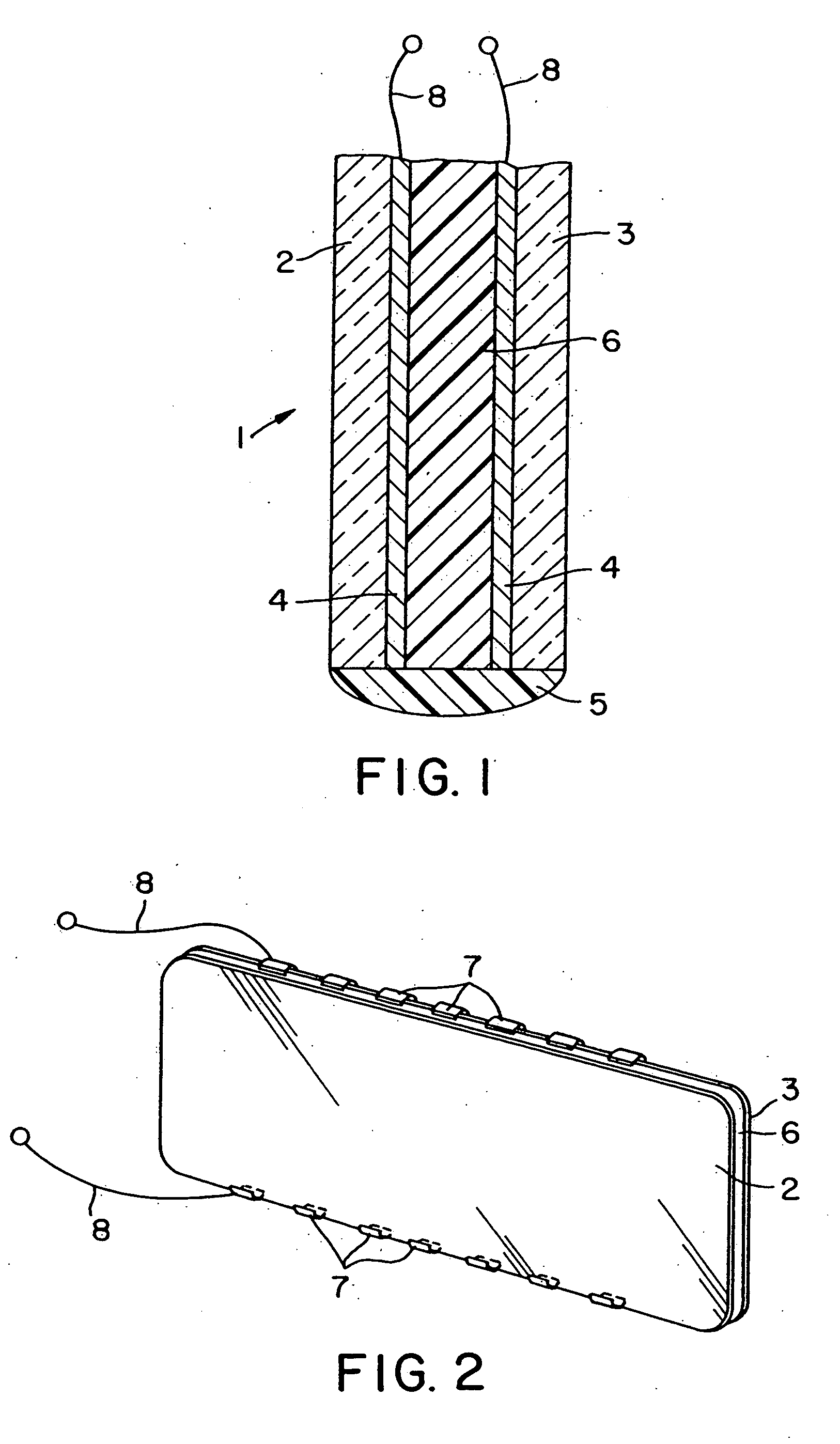Electrochromic polymeric solid films, manufacturing electrochromic devices using such solid films, and processes for making such solid films and devices
a solid film, electrochromic technology, applied in the direction of instruments, cellulosic plastic layered products, natural mineral layered products, etc., can solve the problems of presenting processing and manufacturing limitations of electrochemichromic devices containing electrochemichromic solutions, and unable to meet the requirements of electrochromic devices. , to achieve the effect of reducing the viscosity, reducing the number of solid films, and reducing the number o
- Summary
- Abstract
- Description
- Claims
- Application Information
AI Technical Summary
Benefits of technology
Problems solved by technology
Method used
Image
Examples
example 1
In this example, we chose a RMPT-HVBF4 electrochromic pair, in conjunction with a commercially available ultraviolet curable formulation, to illustrate the beneficial properties and characteristics of the polychromic solid films and electrochromic interior automotive mirrors manufactured therewith.
A. Synthesis and Isolation of RMPT
We synthesized 2-methyl-phenothiazine-3-one according to the procedure described in European Patent Publication EP 0 115 394 (Merck Frosst Canada). To reduce MPT to RMPT, we followed the redox procedure 1 described in commonly assigned co-pending U.S. patent application Ser. No. 07 / 935,784 (filed Aug. 27, 1992).
B. Preparation of Electrochromic Monomer Composition
We prepared an electrochromic monomer composition according to the present invention comprising about 3.7% HVBF4 (as a cathodic compound), about 1.6% RMPT (as an anodic compound), both homogeneously dispersed in a combination of about 47.4% propylene carbonate (as the plasticizer) and, as ...
example 2
In this example, we chose a RMPT-HVBF4 electrochromic pair, in conjunction with a combination of commercially available ultraviolet curable formulations, to illustrate the beneficial properties and characteristics of the polychromic solid film and the electrochromic interior automotive mirrors manufactured therewith by using the sandwich lamination technique.
A. Preparation of Electrochromic Monomer Composition
We prepared an electrochromic monomer composition comprising by weight about 2.6% HVBF4 (as a cathodic compound), about 1.2% RMPT (as an anodic compound), both homogeneously dispersed in a combination of about 40% propylene carbonate (as a plasticizer) and, in combination as a monomer component, about 50% “QUICK CURE” B-565 (an acrylated urethane / ultraviolet curable formulation) and about 10% “ENVIBAR” UV 1244 (a cycloalkyl epoxide / ultraviolet curable formulation). We thoroughly mixed this electrochromic monomer composition to ensure that a homogeneous dispersion of the co...
example 3
In this example, we compared the beneficial properties and characteristics of a polychromic solid film prepared using ferrocene as an anodic electrochromic compound, and manufactured within an exterior automotive mirror (Example 3(B)(1) and (D)(1), infra] and interior automotive mirrors (Example 3(B)(2) and (D)(2), infra). We also installed an interior automotive mirror as a rearview mirror in an automobile to observe its performance under conditions attendant with actual automotive use.
A. Preparation of Electrochromic Monomer Composition
We prepared an electrochromic monomer composition comprising by weight about 4.4% EVClO4 (as a cathodic compound), about 2% ferrocene (as an anodic compound), both homogeneously dispersed in a combination comprising, in combination as the plasticizer component, about 48.6% propylene carbonate and about 8.8% cyanoethyl sucrose and, in combination as a monomer component, about 17.7% caprolactone acrylate and about 13.3% polyethylene glycol diacry...
PUM
| Property | Measurement | Unit |
|---|---|---|
| interpane distance | aaaaa | aaaaa |
| interpane distance | aaaaa | aaaaa |
| interpane distance | aaaaa | aaaaa |
Abstract
Description
Claims
Application Information
 Login to View More
Login to View More - R&D
- Intellectual Property
- Life Sciences
- Materials
- Tech Scout
- Unparalleled Data Quality
- Higher Quality Content
- 60% Fewer Hallucinations
Browse by: Latest US Patents, China's latest patents, Technical Efficacy Thesaurus, Application Domain, Technology Topic, Popular Technical Reports.
© 2025 PatSnap. All rights reserved.Legal|Privacy policy|Modern Slavery Act Transparency Statement|Sitemap|About US| Contact US: help@patsnap.com



